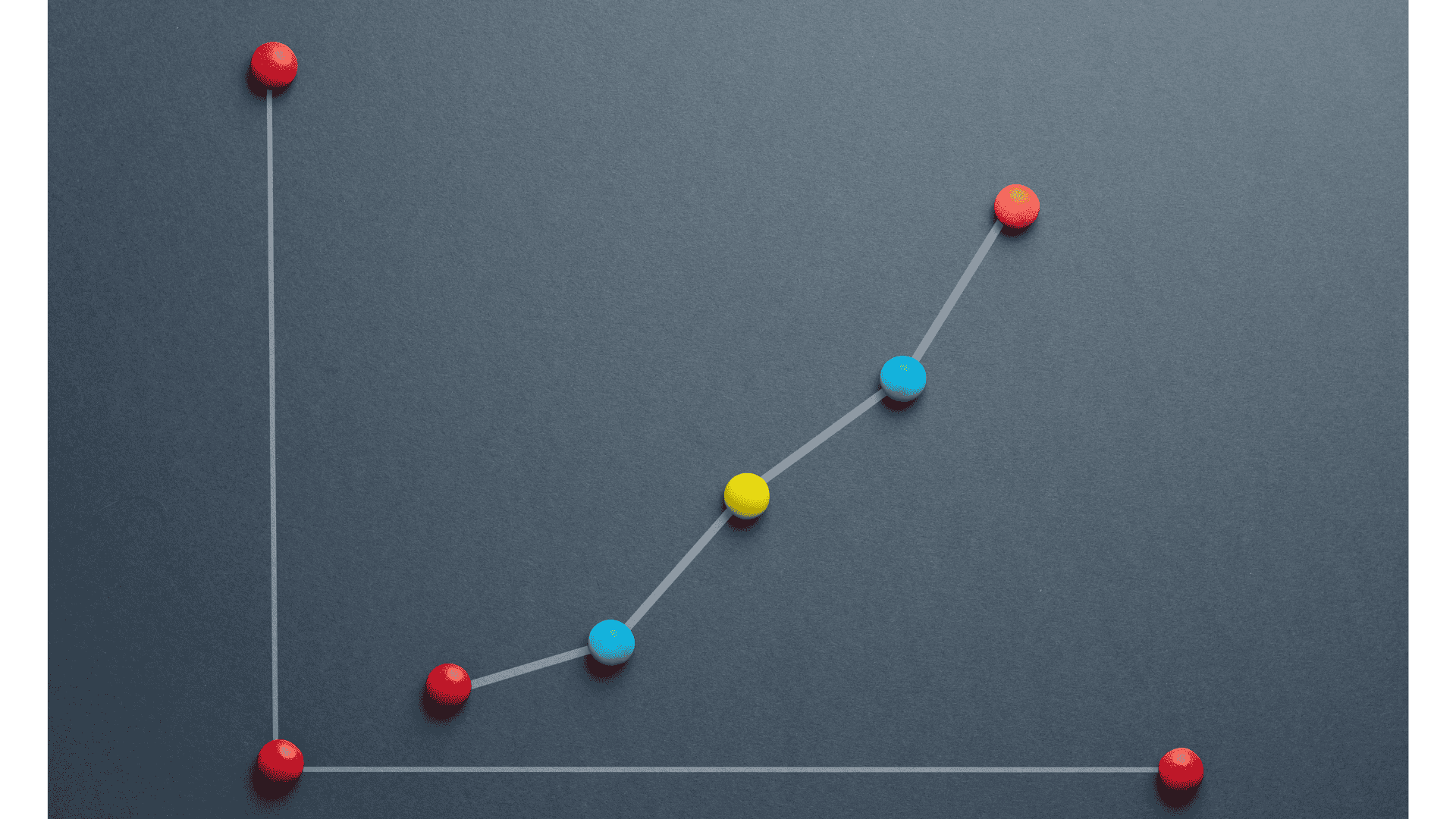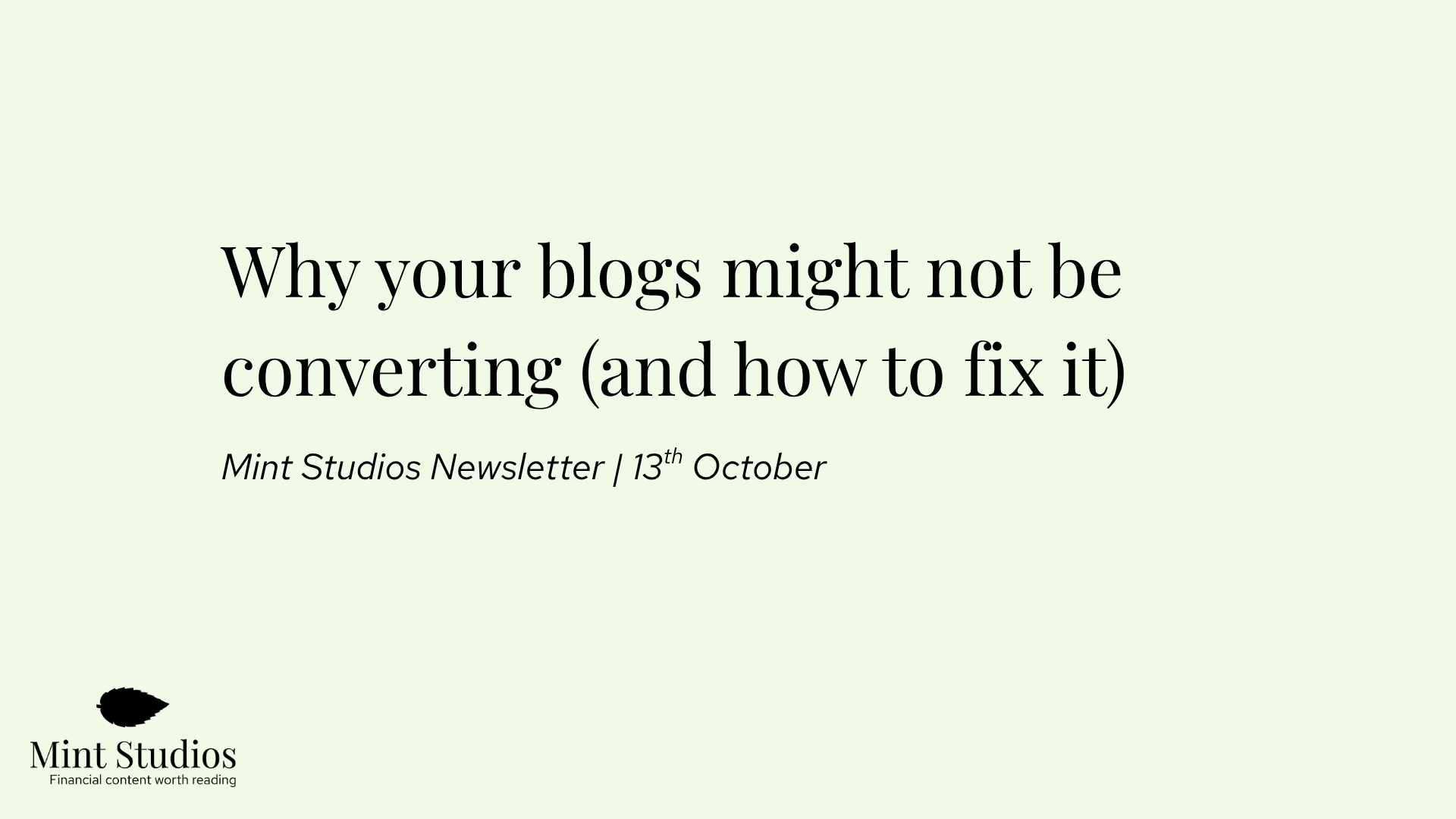If you’re looking for a generative-engine or AI optimization agency, you’re probably facing challenges like:
- Watching your organic traffic drop as generative engines dominate search results, and wondering whether this will impact your bottom line
- Struggling to appear in AI-generated answers from Google’s AI Overviews, AI Mode, or tools like ChatGPT, Claude, and Perplexity
- Feeling unsure how to adapt your SEO strategy to a world where LLMs, not just humans, decide what gets seen
- Wanting a clear plan to future-proof your visibility before competitors own the AI search space
The right optimization partner can help you figure out how to appear in AI-generated answers, maintain visibility in AI Overviews, and build strategies for emerging generative search platforms, while connecting those appearances to real business results.
But here’s the challenge: with generative engine optimization (GEO) still an emerging discipline, it’s hard to tell the genuine experts from those simply adding “AI” or “GEO” to their pitch deck.
Having spent over 5+ years working in digital marketing for financial services, and helping brands like Yapily, Jeeves, and Persona adapt to changing search landscapes, we’ve learned what separates a great agency from the rest. That’s why we’ve put together this guide to the top-performing generative engine optimization agencies in 2025, along with the traits to look for if you want results, not just mentions.
In this guide, we cover:
- Understanding AI optimization in 2025
- What to look for in an AI optimization agency
- Top AI optimization agencies comparison chart
- A list of the top AI optimization agencies
- How to measure AI optimization success
- Choosing the right agency
- FAQs
What GEO really means in 2025 and why it’s not just “AI SEO”
Generative engine search is rewriting the rules of digital visibility. According to a recent SparkToro study, 60% of Google searches now end without a click. This means more people are getting answers directly in summaries generated by Artificial Intelligence (AI), skipping websites entirely.
For brands, that shift is huge. Every lost click is a missed opportunity to connect with potential customers, convert leads, and build brand authority.
To win in this environment, you need a new approach: Generative Engine Optimization (GEO). It is sometimes called AI Search Optimization (AI SEO), Answer Engine Optimization (AEO) and Large Language Model Optimization (LLM-O). Whatever you decide to call it, the goal is the same: when the user is searching for information or a product, your brand appears.
Unlike traditional search engine optimization (SEO), which targets rankings in search engine results pages (SERPs), GEO focuses on getting cited in AI-generated responses. The platforms are different (think ChatGPT, Claude, Gemini, and Perplexity alongside Google’s AI Mode and AI Overviews), and so are the goals. Traditional SEO aims for clicks, while GEO aims for visibility and authority inside AI answers.
For highly regulated industries like financial services, the challenge is even greater. AI tools often oversimplify or misinterpret complex topics unless guided by accurate, structured, expert-led content. In these sectors, you must:
- Ensure compliance with strict industry regulations
- Present authoritative, trustworthy information that AI tools will cite
- Use natural language and structured data and structure your content so large language models (LLMs) can parse and reuse it without distorting your message
Done right, this combination of compliance, clarity, and authority does more than earn you mentions. It builds lasting credibility with both AI platforms and your target audience.
So, optimizing content for generative engines in 2025 so far means:
- Writing content in a way that that is easier for LLMs to crawl
- Increasing brand mentions on publications and relevant third parties
- Monitoring where your brand is and is not appearing, and figuring out where to get it to appear that matters
- Creating Bottom-of-the-Funnel (BOFU) content that meets customers at the buying stage and offers LLMs a quick and easy way to understand your brand and products or services.
An example of what seems to be effective BOFU content for AI, at least for now based on our studies, is listicle-styled product comparison articles (e.g., “Top Account Information Service Providers”) that act like what Profound’s Josh Blyskal says are a “marketplace of answers”. This is because these types of posts provide LLMs with much of the information they need to present products to searchers.
For a more in-depth look at how AI is impacting marketing, read: What Does AI Mode Mean For Your Marketing (And What Can You Do To Adapt?)
Top generative engine optimization agencies: Quick-view comparison chart
0. Mint Studios: AI optimization / GEO agency for financial services
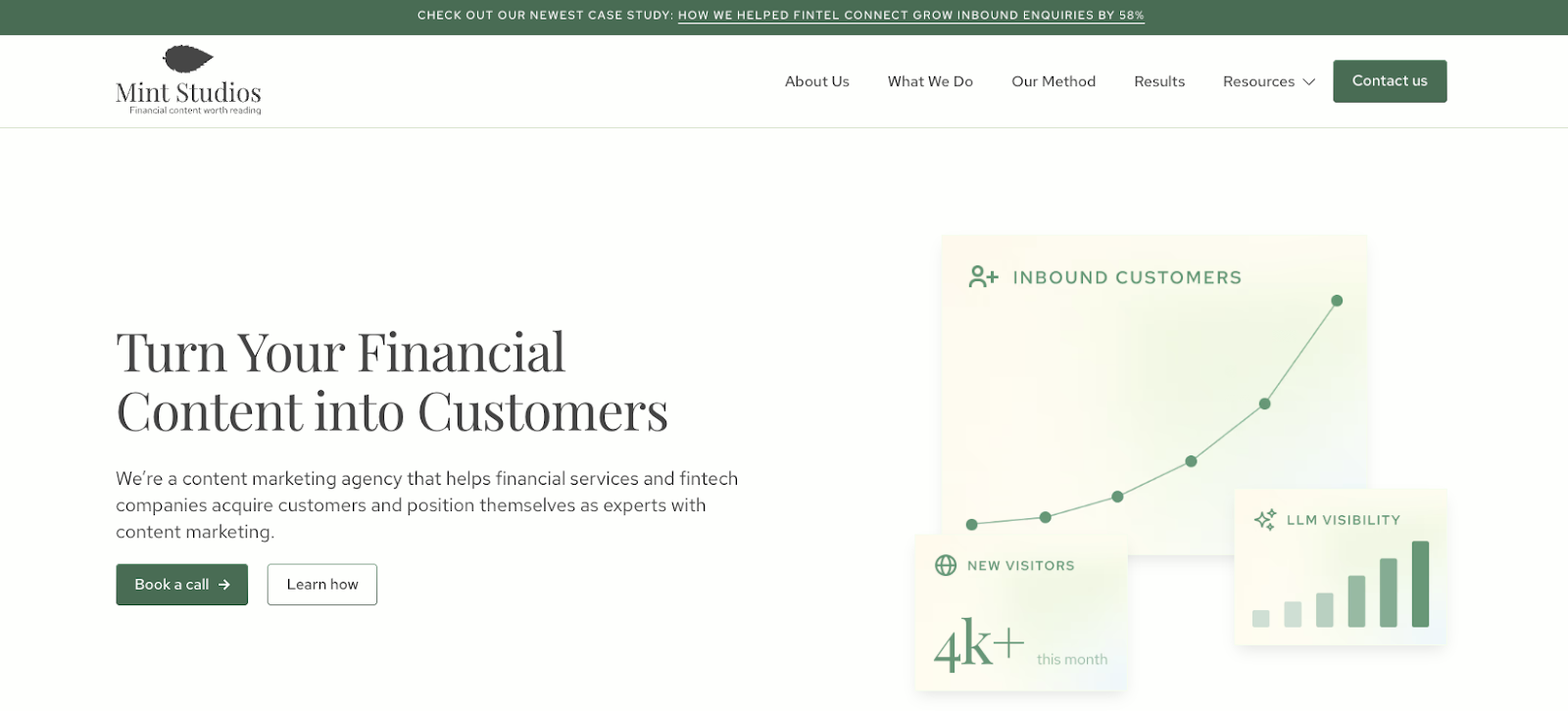
Since we’re the ones writing this article, we'll begin with our own agency and explain what we do.
Mint Studios is a GEO and SEO content marketing agency specialized in financial services. We help fintechs and financial services companies acquire customers and position themselves as experts with content marketing.
Our AI optimization services include:
- GEO analysis
- GEO strategy
- GEO content creation
- Goal tracking and ROI calculation
Our background and experience shaped why we created our own agency. Having worked both in-house and as a marketing consultant for large financial firms with substantial budgets, I, Araminta, started the company when I saw businesses consistently making the same mistakes. Marketers were creating thought leadership and brand awareness content, but being held accountable for MQLs, SQLs and revenue.
We help plug that gap with revenue focused content.
As buying behavior shifts and more prospects use AI tools for their research, we’re seeing a familiar challenge: companies produce content that builds awareness but doesn’t connect clearly to revenue (even if it might help improve their visibility on those tools). It’s the same gap we’ve helped close for years through SEO. Now we’re applying that same revenue-focused approach to AI visibility, making sure the mentions you earn in AI search actually drive qualified leads and sales.
This is what differentiates our approach from other GEO agencies’. Here is how our specialized focus has enabled us to become one of the top international marketing agencies for financial services, with clients across Asia, Europe, and North America and offices in the UK and US.
You get customers and revenue, not just AI visibility
Our Bottom-of-the-Funnel (BOFU) approach helps you educate your customers and drive conversions.
The framework includes:
- Start with business outcomes. Your focus will be on leads, deals, and revenue. Before we start an engagement, we complete a 2 week Diagnostic to understand what the opportunity in $ is and what execution looks like.
- Build a content strategy from your customers’ pain points. By speaking directly with your sales and product teams, we identify the problems your prospects are actively trying to solve, so your content speaks directly to them.
- Create and publish expert-led content that earns trust. Interviews with your in-house experts form 90% of the content. This ensures accuracy, authority, and recognition from AI platforms while highlighting your product’s strengths.
- See exactly how content drives revenue. You get full conversion tracking in HubSpot and GA4, plus monitoring from AI-specific tracking tools like Peec and Profound, so you can see which pieces influence leads and deals over time.
Learn more about the Mint Studios Method.
This approach allows you to meet your customers at the buying stage when they're actively looking for solutions to their pain points. For example, instead of producing content about "What is fintech," you create articles like "Best fintech solutions for small business banking" or "How to choose a digital payment processor", which allow you to talk about solutions and show how your product can help.
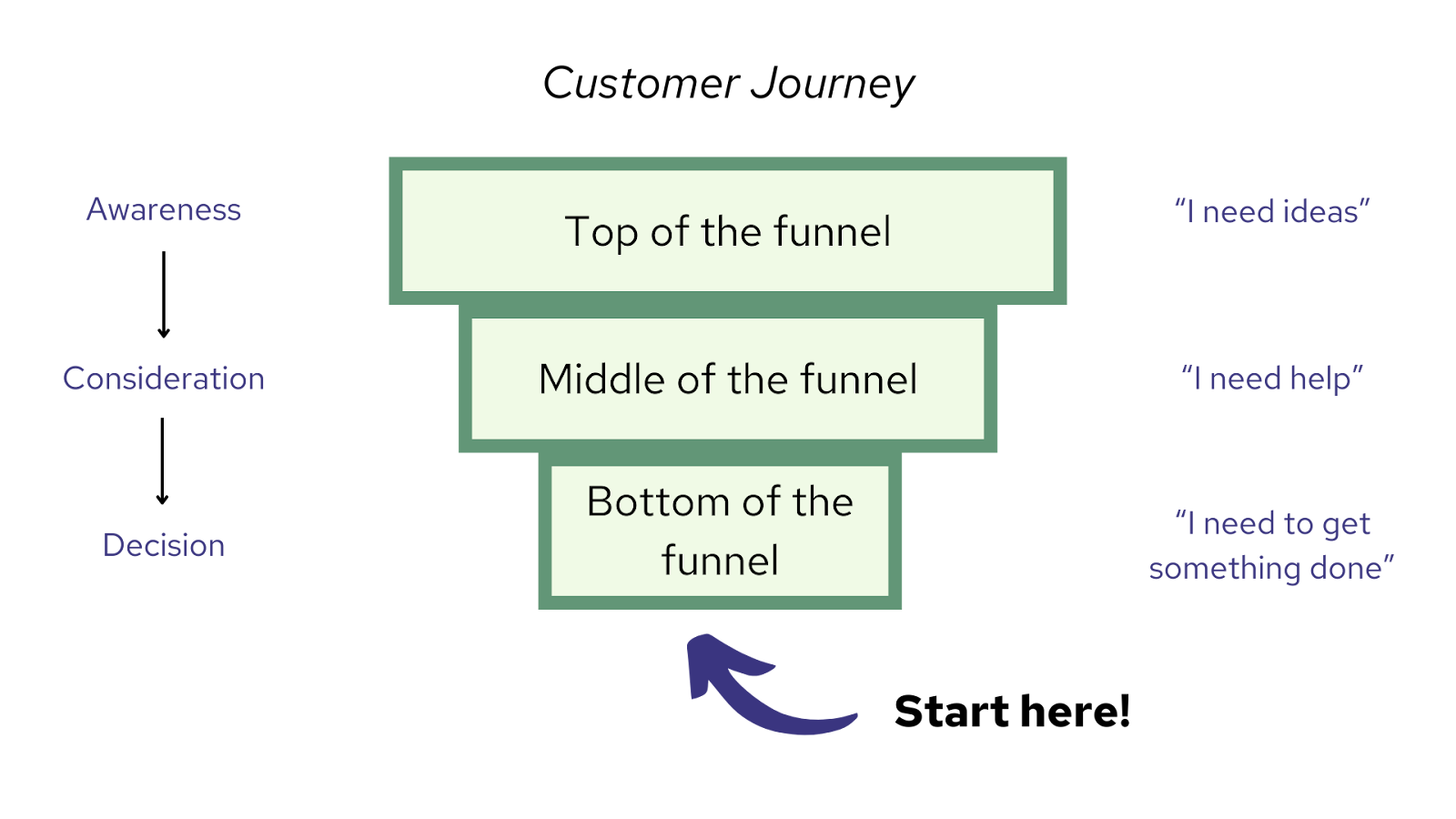
Curious to know more? Read: What is BOFU (Bottom of the Funnel) Content and Why Is it Important?
Once you’ve exhausted this stage, you work your way up the funnel.
This approach:
- Helps convert faster because you meet customers where they are: at the decision stage
- Provides insights into what's working and the most effective messaging
- Means you can refine marketing efforts more quickly to reach your target audience in the buying stage
Our clients have achieved measurable results with this strategy. For example, Fintel Connect grew inbound website enquiries by 58% through our combined content efforts, focusing on bottom-funnel content that converts visitors into qualified leads.
You get expert financial services content because we’re industry specialists
In financial services, you’re often targeting technical, well-educated audiences. These are not audiences that will read an article titled “What is a payment?” – they are looking for in-depth, technical content.
That’s why it’s so important to create content written at their level of knowledge, if not, they are unlikely to take you seriously and then want to work with you.
Since we specialize in the financial services industry, we’re able to create content that is written at that knowledge level. Our process also involves interviewing experts on your team, so we can go in detail about your product features and benefits.
You’ll have in-depth, technically accurate content that reflects your customers’ real challenges and your brand’s value because we have processes to capture those insights from your internal experts.
You’ll work with a small pod of three (content writer, content strategist and our MD, Araminta) who are already familiar with your industry’s terminology and compliance considerations. They can cover topics ranging from payment APIs and onboarding automation to identity verification and financial services licensing, without the long onboarding curve of generalist agencies that need time to learn your products and services. Your content will clearly convey the nuances of your value propositions so it connects with advanced audiences from day one.
You’ll get a knowledge partner, not just an execution partner
The content marketing world is constantly changing, especially in the age of AI. Every week there are new developments and new test to be done to find out what does and doesn’t work.
With Mint Studios, you gain a partner who helps your team stay up to date in content, SEO, and AI-driven marketing. We act as an extension of your team and share insights on trends, AI developments, and best practices, so you’re one of the first to benefit from new marketing strategies and can participate in our AI pilots. This includes tracking your brand’s presence in AI systems, monitoring mentions, context, sentiment, and whether they drive business results.
For example, our AI testing has shown that targeted BOFU content, like “Top X” articles and FAQs that address customer pain points, significantly increases visibility in AI responses while supporting conversions.
You’ll also receive the latest news on product innovations and market shifts. This ensures your messaging is always current, positioning your brand as a trusted authority both for customers and for AI-driven search and recommendations.
Mint Studios may not be the right fit for every company, so here are five other best AI optimization agencies:
1. NoGood
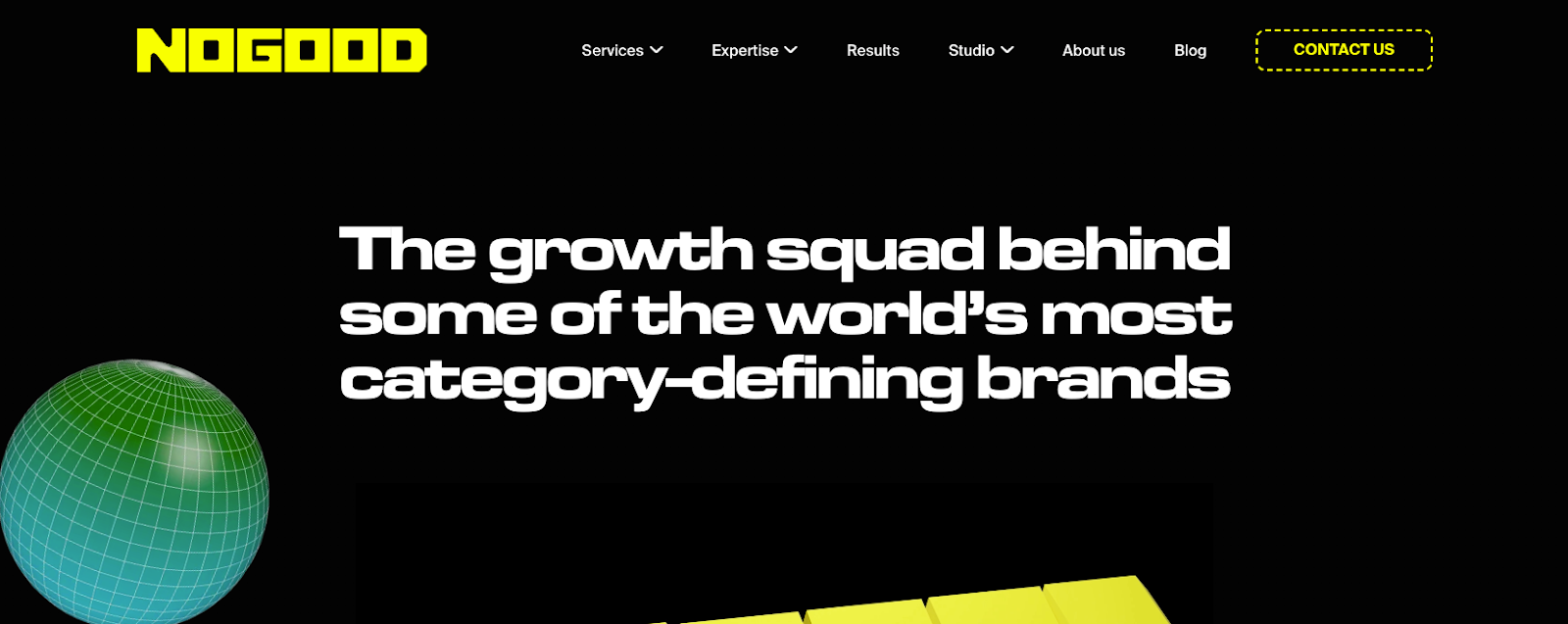
NoGood is a full-service growth marketing agency based in New York, NY that includes AEO. It works with a wide range of verticals, including SaaS, health, B2C, B2B, and AI. Companies of all sizes, from startups to enterprise can take advantage of its comprehensive offerings.
Main AI optimization services include:
- AEO content strategy and creation
- Traffic and conversion tracking
- Visibility insights across LLMs
- Reputation management and digital PR
Example clients: Johnson & Johnson, Amazon, Intuit, JVN
2. Intero Digital
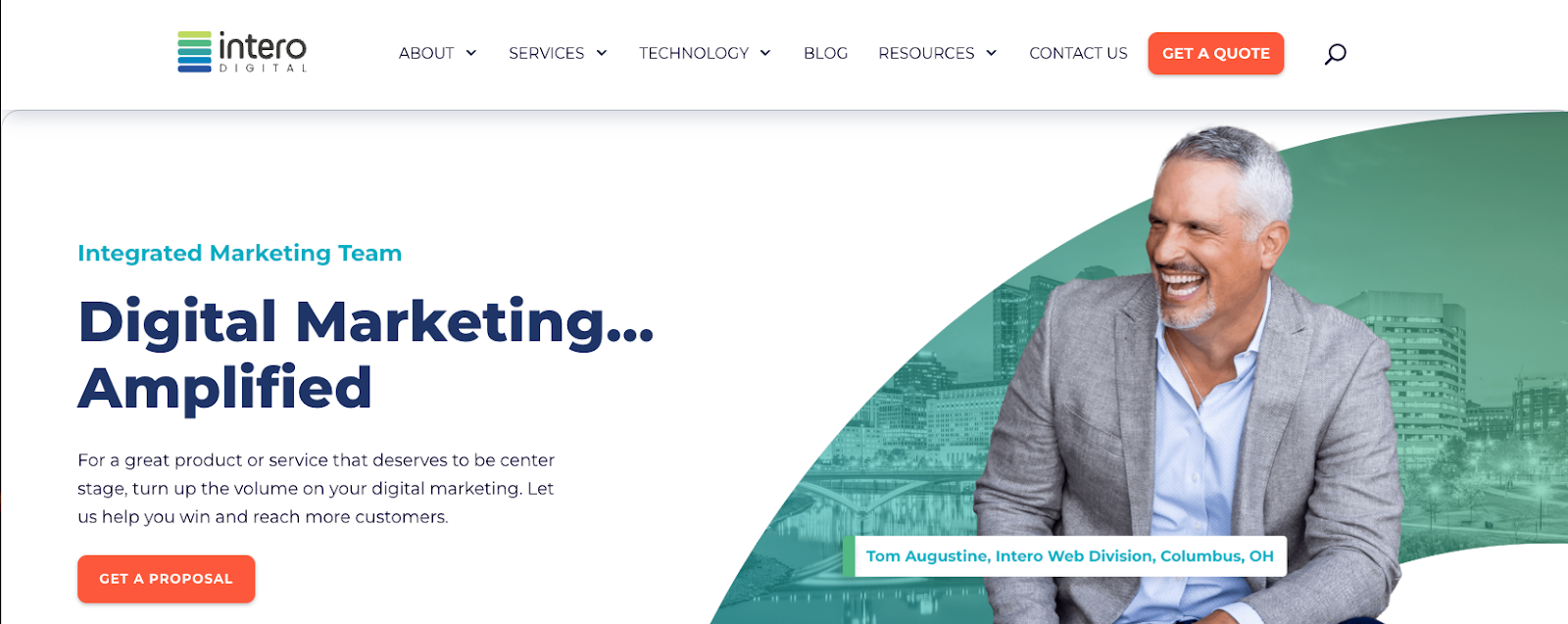
This longstanding agency was founded in 1996 and offers comprehensive marketing that includes GEO. Headquartered in Colorado Springs, Colorado, it has various offices across the US. It serves various industries, including travel and hospitality, e-commerce, SaaS, fashion, and healthcare. InteroBOT® is its proprietary search engine crawler simulator that can help predict search results and test strategies. Intero Digital offers both local and national reach.
Main AI optimization services include:
- Generative Engine Optimization (GEO)
- Generative AI analysis
- Content strategy and creation
- Digital reputation management and PR
Example clients: Colette, Mikimoto, TRACOM Group, Nomadix
3. Victorious

This SEO agency works with multiple verticals, including healthcare, cybersecurity, AI, financial services, real estate, and e-commerce. They have offices across the US, with headquarters in San Francisco, and offer international reach. Best for mid-market and enterprise brands looking to launch in new regions or across borders.
Main AI optimization services include:
- AI audit and strategy
- AI prompt research
- Optimizing existing content for AI
- Technical SEO for AI
Example clients: GE Digital, SoFi, Wayfair, Salesforce
4. Clarity Global
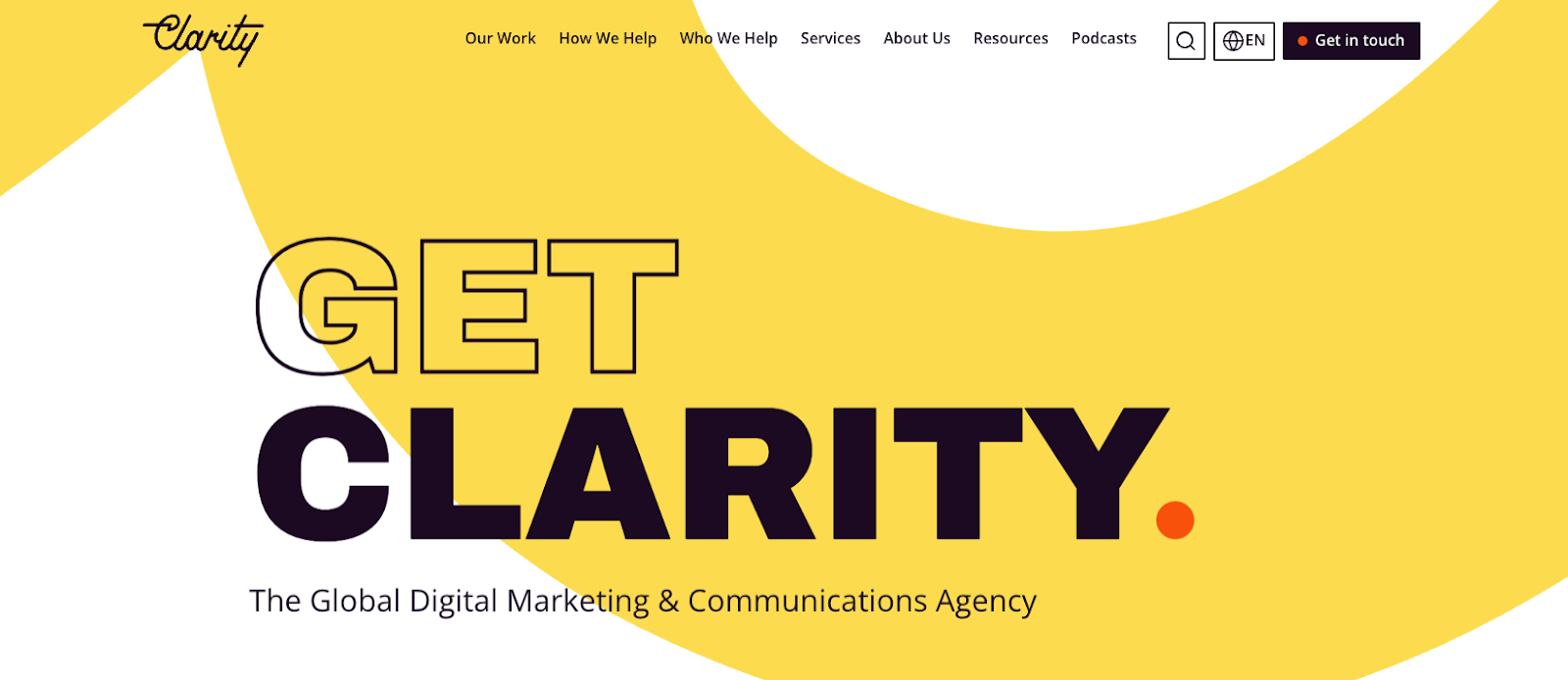
Clarity is a global digital marketing and communications agency. Headquartered in London, it has multiple offices worldwide. It serves multiple verticals, such as telecommunications, e-commerce, cybersecurity, adtech, martech, fintech, lifestyle and entertainment. Clarity Global can be a good fit for firms looking to leverage PR to optimize AI visibility.
Main AI optimization services include:
- GEO-focused content analysis
- Optimization of existing content for AI
- Online presence optimization
- Presence, traffic and engagement tracking
Example clients: SurveyMonkey, Airbus, Engie, GitHub, Oracle
5. WebFX
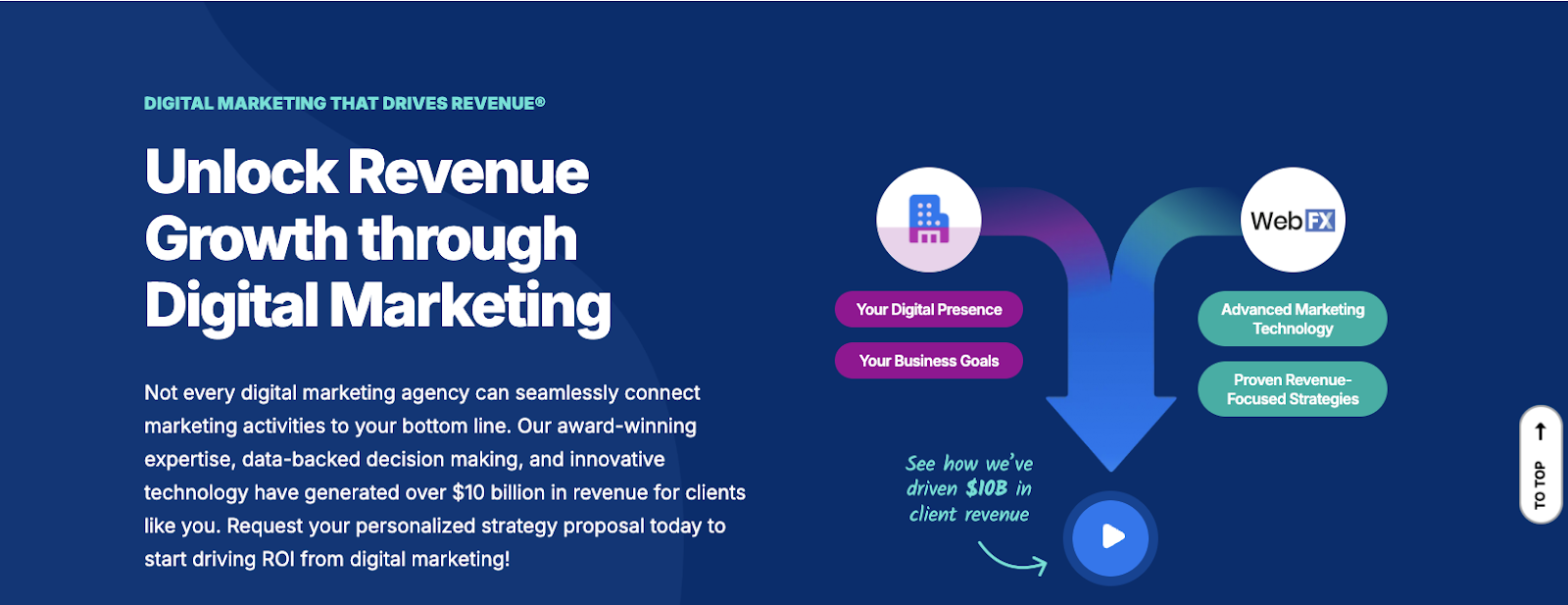
This performance-driven digital marketing agency is based in Harrisburg, Pennsylvania, with offices spread across the U.S. It provides a variety of marketing services, from SEO, local SEO and PPC, to social media and content marketing. They have experience in various industries, such as transportation, manufacturing, telecommunications, e-commerce, automotive services, and hospitality. They can be a good fit for US companies looking to expand their AI visibility locally as they branch out to new states.
Main AI optimization services include:
- GEO and SEO audit
- AI strategy
- AI optimization and new content creation
- Performance tracking
Example clients: Hilton, Fujifilm, Wrangler, Verizon,
What to look for in a GEO agency
Choosing the right AI optimization partner isn’t just about finding an agency that says it “does AI.” The best agencies combine technical know-how with a deep understanding of your industry and a clear process for tying AI visibility to business outcomes. They are deeply obsessed with understanding what does and doesn’t work in content marketing, SEO and AI optimization today.
Agencies that are specializing in GEO are constantly on top of things, testing new tactics and studying what works and what doesn’t. In as little as 6 months, current strategies may no longer work because AI search is changing so quickly. This means you need an agency that is curious and loves experimenting and staying on the cutting edge of AI and marketing.
Here are the capabilities we recommend looking for, based on what we’ve seen work in both AI optimization and regulated industries like financial services:
1. They understand how LLMs work (and in what ways it’s different to search engines)
AI search optimization requires more than traditional SEO skills. Your agency should understand how AI search engines and machine learning systems consume, interpret, and cite content.
This includes prompt testing, structuring information (e.g., schema markup) so LLMs can parse it accurately, and knowing the on-page and technical factors that influence whether your brand appears in AI answers.
For example, we’ve seen agencies publish long-form guides full of valuable content, only to have them ignored by AI platforms because the structure wasn’t optimized for machine parsing.
LLMs source the inputs that will form their responses to user queries through passage retrieval, which is the mechanism many LLMs use for selecting content. This means they are looking for precise and well-structured “chunks” of information that answer specific queries, not entire articles. Small adjustments to formatting and headings can make the difference between being cited or invisible. Even subtle changes, like rewriting a paragraph as a direct Q&A, can get content to be featured in AI responses.
It’s important that a GEO agency knows this.
There are also key differences between LLMs and search engines that agencies should know, even though there is some overlap. For example:
- LLMs love more recent content (as Ahrefs shows in a recent study), whereas search engines prefer content that is older and more authoritative (unless recency is part of the search intent).
- LLMs use passage retrieval, while search engines index, crawl, and rank pages.
- LLMs are “lazy”, taking the content at face value, and often incorporate retrieved passages directly into their responses as long as they’re clear and self-contained. So, it’s more important than in traditional SEO to create succinct, precise, and well-structured writing to get LLMs to notice your brand.
- LLMs rely on context, which means they interpret each new question in light of the entire conversation. Instead, search engines treat every query as a standalone request. This means LLMs create opportunities to appear in multi-faceted, follow-up queries that traditional SEO would miss.
This makes BOFU content an important AI strategy in order to appear in LLMs at the right time: when the user is ready to buy.
2. They are constantly testing and staying up to speed on new developments
AI search is a new industry that is still in the making, requiring real-time adaptation. A strategy that works one week might underperform the next because of a little-known algorithm update or a new way AI models choose sources.
That’s why you want a partner who’s data driven and doing controlled testing and tracking results to see what works. This enables them to shift strategies when they see a change in the data which is crucial in a space that’s moving so quickly.
Look for case studies, examples, or even small-scale results that show the agency has already learned from working in this new space and can pivot when platforms change.
3. They know which KPIs to track
Since AI optimization doesn’t always drive clicks in the same way traditional SEO does, tracking only pageviews misses the full picture. The right agency will use AI visibility platforms like Peec or Profound (there are many more, and many do the same thing) to track:
- When and how your brand is cited, including the LLM platforms and how often you appear
- The context of the mention, showing exactly where it appears in the AI answer (e.g., "2nd position" for a given query) and the specific wording of the surrounding answer
- Mention sentiment by classifying mentions as positive, negative or neutral
Also, look for agencies that will go one step further by connecting those mentions to actual business results by tracking leads and lead quality through self-attribution.
For example, after we set up self-attribution and lead-quality tracking for one of our clients, they discovered a 150% increase in inbound leads via LLMs, which are now making up 20% of all their inbounds.
Choosing an AI optimization agency: Questions, red flags, and what really matters
Once you know what to look for in a GEO partner, the next step is deciding which one is the best fit for you. This is where asking the right questions and spotting early warning signs can save you months of frustration.
1. Ask the right vetting questions
Focus on specifics rather than broad claims. Some questions we recommend:
- How do you measure success?
- Can you share case studies or pilot results for AI search visibility and ROI?
- How do you structure content for AI platforms differently than for traditional SEO?
- What’s your process for adapting to changes in AI search algorithms?
- What are some experiments or tests you are running to improve visibility?
The best agencies can answer these without relying on jargon or vague promises, and are honest when they don’t know (which is totally fine, as this industry is quite new).
2. Look for proof of process
Case studies are useful, but they don’t always reveal how an agency works. Ask for a walk-through of their AI optimization process, from research and implementation to measurement. This way, you can see if it aligns with your goals and internal workflows.
3. Watch for red flags
Some signs an agency may not be a good fit:
- They focus only on top-of-funnel topics without a plan for converting that visibility into leads or revenue.
- They can’t clearly explain their AI optimization methodology.
- They make over-the-top guarantees about “ranking” in AI platforms (AI doesn’t work like traditional search rankings).
- They rely solely on vanity metrics like “brand mentions” without showing a connection to business outcomes.
4. Set realistic timeline expectations
Like SEO, AI optimization takes time to deliver results. In most cases, expect to see measurable improvements in three to six months. Agencies that promise overnight success are either overselling or not being upfront about the complexity of the work.
Most importantly, no one currently can guarantee that they can help you appear on AI search. As it’s a whole new industry and still in the early stages, it’s constantly changing.
Based on this, pick an agency that is honest and will tell you when strategies are not working.
How to measure generative AI optimization success
In AI-powered searches, brand visibility changes from holding a top spot in 10 blue links to being featured inside the response to a query, from mentions and recommendations to citations. This means your success metrics have to change, too. In traditional SEO, traffic was the default performance measure. With AI optimization, appearances in AI-generated answers don’t always lead to a click, but they can still influence brand awareness, trust, and conversions.
Here are the key metrics we recommend tracking, and why each one matters:
1. Brand visibility on AI search tools
Measure how often your brand appears in AI-generated answers across platforms like Google’s AI Overviews, Perplexity, ChatGPT, and Claude. This goes beyond the number of appearances to include where in the response you show up and sentiment analysis (i.e., whether the mention is positive, neutral, or negative).
A high position with a positive mention, builds trust and credibility with the reader, even if they don’t click through immediately.

Visibility in Peec measures how often LLMs mention your brand compared to competitors
2. How many times your website is sourced
Track how frequently AI tools cite your content as a source in their responses. Citations are a strong signal that your content is authoritative, reliable, and structured in a way AI can easily parse.
In regulated industries, citations also reinforce compliance and accuracy, making your brand a trusted authority in the AI’s “eyes.”

3. Find out if AI is sending you leads
It’s still quite difficult to track conversions from AI sources automatically since few people actually click within an AI tool. They get what they need directly from the AI-generated answer. While UTM links and referral tracking can give you an idea of when clicks happen, they won’t give you the full picture of how AI tools are influencing conversions.
A better way is self-attribution. By adding a “How did you hear about us” field in your contact forms, you can see if a lead learned about your brand through an AI tool, even if they didn’t click during their LLM chat. You can then track self-attribution by setting up custom reports in CRMs like HubSpot.
This is the method we used for one of clients and found that 20% of their inbound leads were coming from LLMs. This would have been invisible with traditional click-based analytics.
GEO companies: Select a partner with proven processes
The real goal of GEO is making sure your brand shows up in the answers people see when they use AI search tools. While the platforms will keep changing, the fundamentals stay the same: create authoritative, expert-driven content that generative engines can easily find, understand, and trust enough to cite. The right optimization company will focus on earning that visibility in ways that also bring in quality leads and revenue, so can tie your presence in AI search back to business growth.
So, the agency you choose should:
- Understand the technical requirements of AI search platforms and how to adapt as they change
- Go beyond surface-level visibility metrics to prove ROI
- Combine industry-specific knowledge with a clear, repeatable process
- Help you connect AI visibility directly to leads, revenue, and long-term authority
- Passionate about the space and constantly testing and trying new tactics
Proven processes win over hype every time. A partner who can explain their methodology clearly, back it up with results, and show how they tie AI optimization efforts to your business outcomes will be far more valuable than one chasing trends.
GEO is still in its early days. But it’s a space we’re actively testing and have seen some initial results. We’d be happy to go into more detail about some of our optimization work on a call.
FAQs about choosing a top generative engine optimization company in 2025
1. How do generative engine optimization companies help my business appear in AI-generated answers?
They figure out how AI tools choose what to show and then shape content so it’s easy for LLMs to retrieve the information they’re looking for. This means creating content that answers specific problems your target audience is looking for in a clear, well-structured way that instills trust and increases your chances of being mentioned or cited.
2. How is generative AI optimization measured?
Unlike SEO’s click-through and ranking metrics, AI optimization success is measured by citations in AI responses, visibility in LLMs and AI Overviews, engagement with AI-recommended content, and self-attribution.
3. How long does it take to see results from generative engine optimization (GEO)?
Most mid-to-large businesses begin seeing measurable citation growth from generative engines in 3–6 months, though timelines vary based on industry competition, content readiness, and the complexity of AI platforms targeted.
4. How does generative AI optimization fit with my existing SEO strategy?
Generative AI optimization complements existing SEO. While SEO drives visibility in search results, AI optimization ensures your brand is featured in conversational AI responses, which are increasingly bypassing traditional clicks.
5. How do I choose the right GEO agency for my business?
Look for agencies with proven case studies in your industry, technical AI search expertise, the ability to create expert-based, compliance-ready content, and transparent reporting on AI-specific metrics.
6. Can generative AI optimization help with declining organic traffic?
Yes, by ensuring your content appears in AI-generated recommendations and AI-driven search answers, you can offset traffic loss from zero-click searches and maintain brand discoverability.




